Charles E W Bean, Diaries, AWM38 3DRL 606/243B/1 - 1916 - 1926 - Part 1

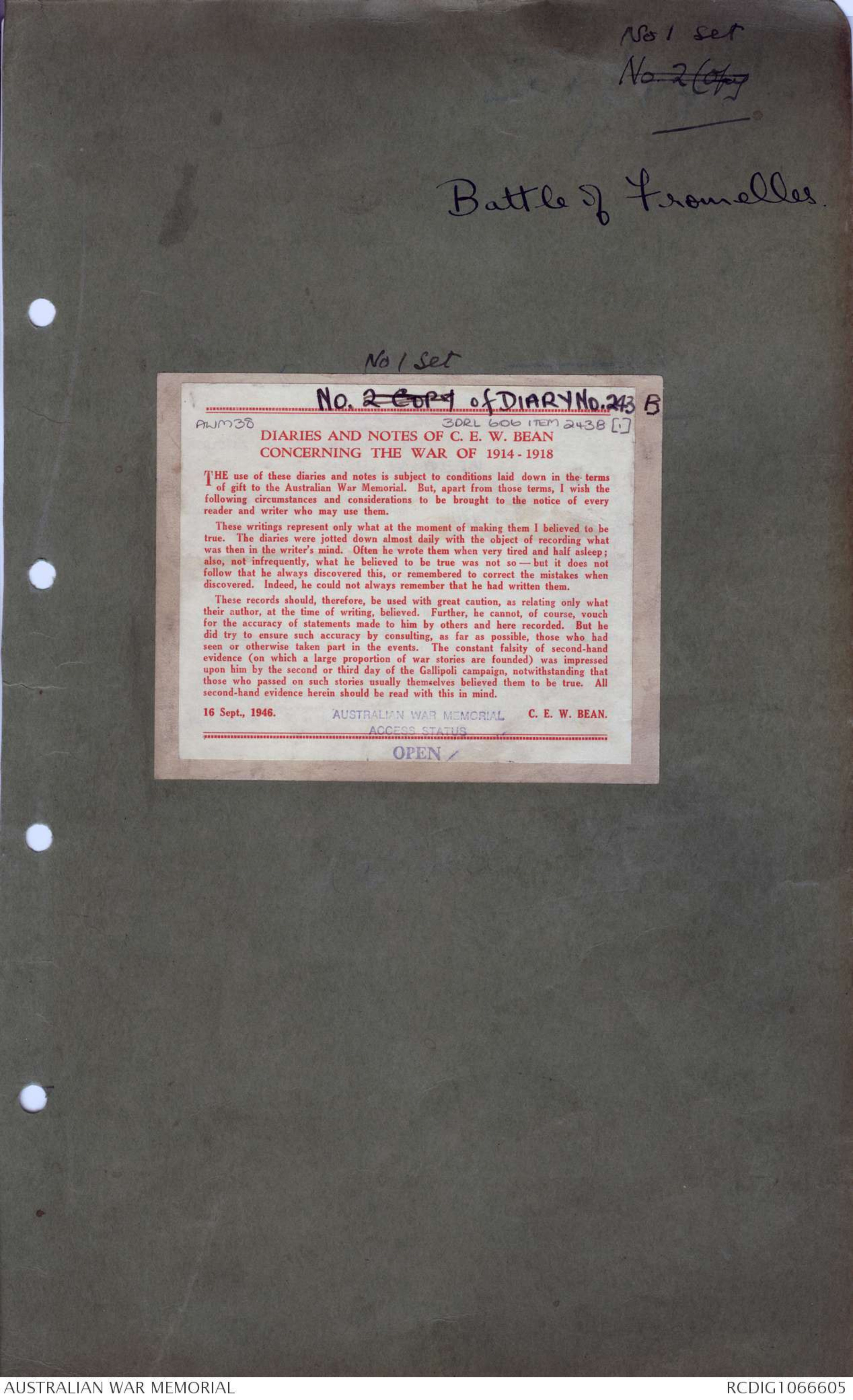
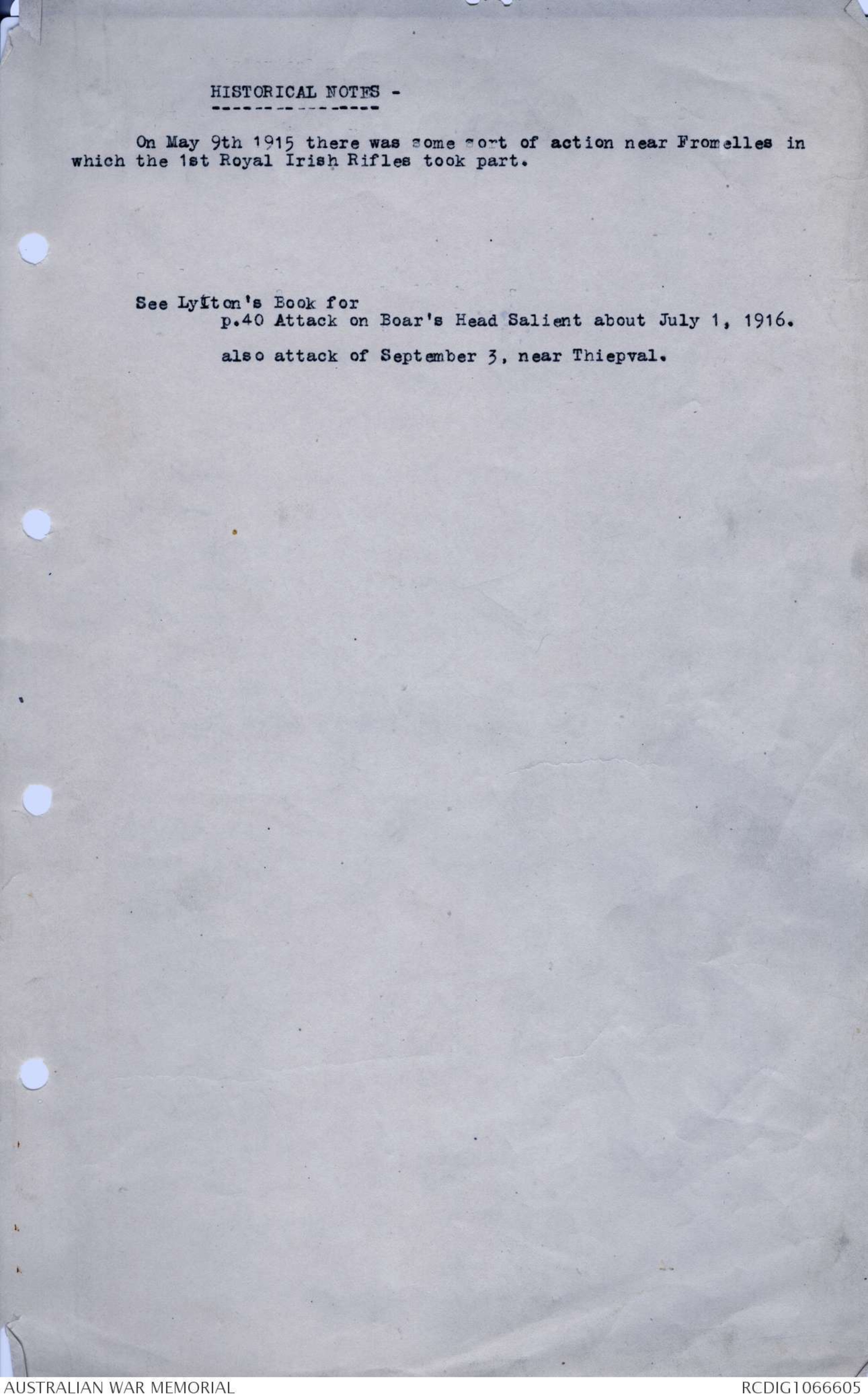
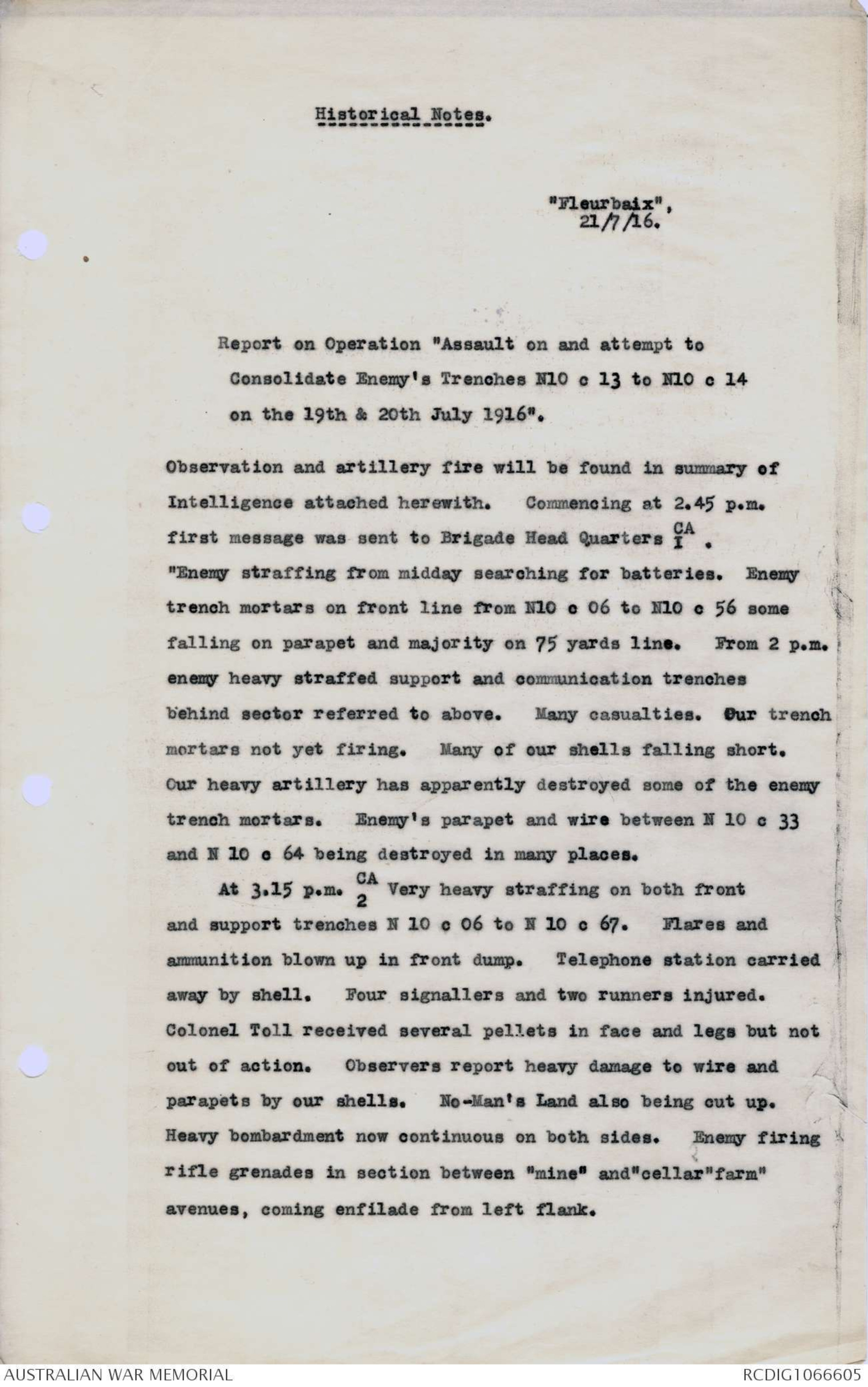
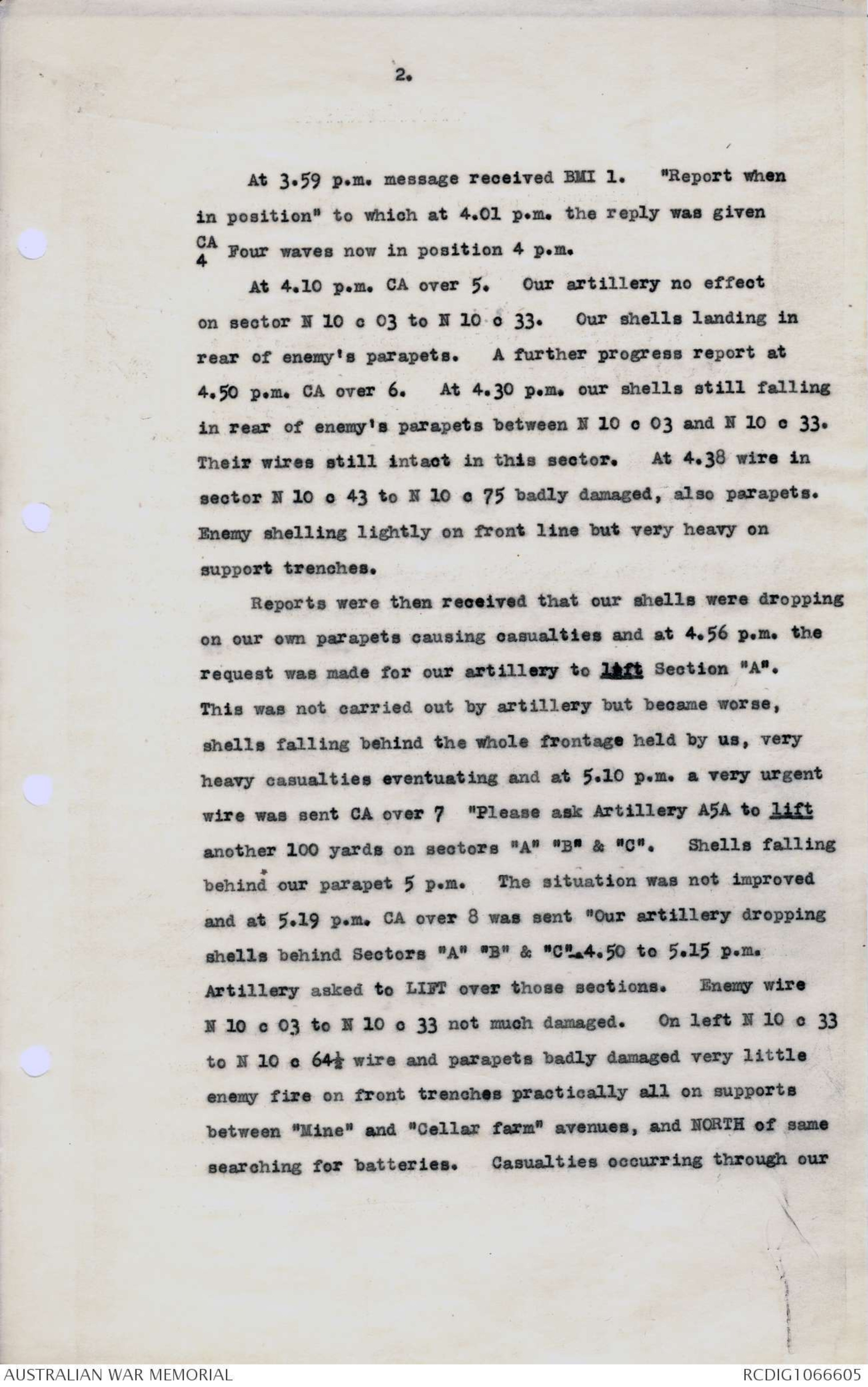
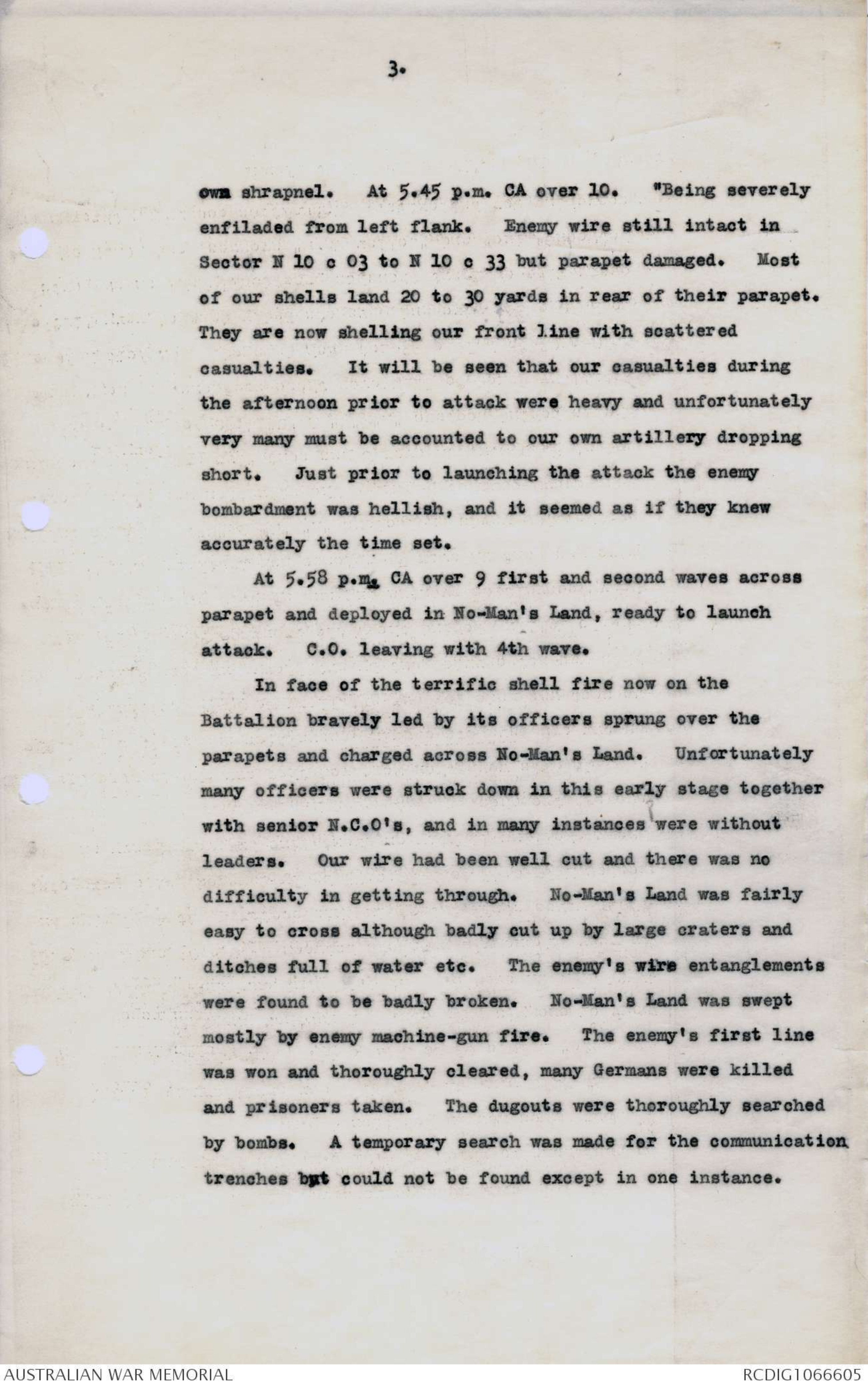

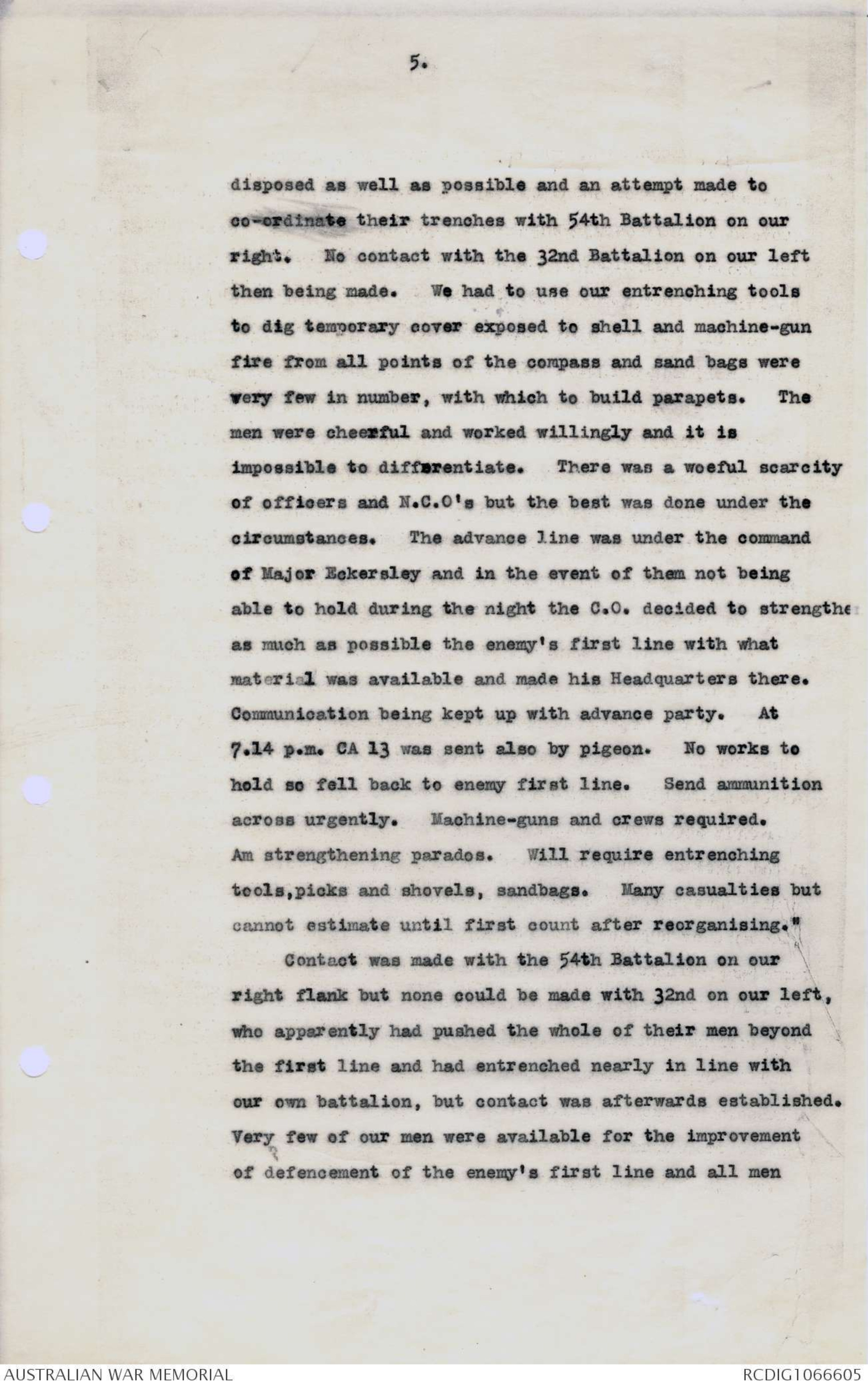
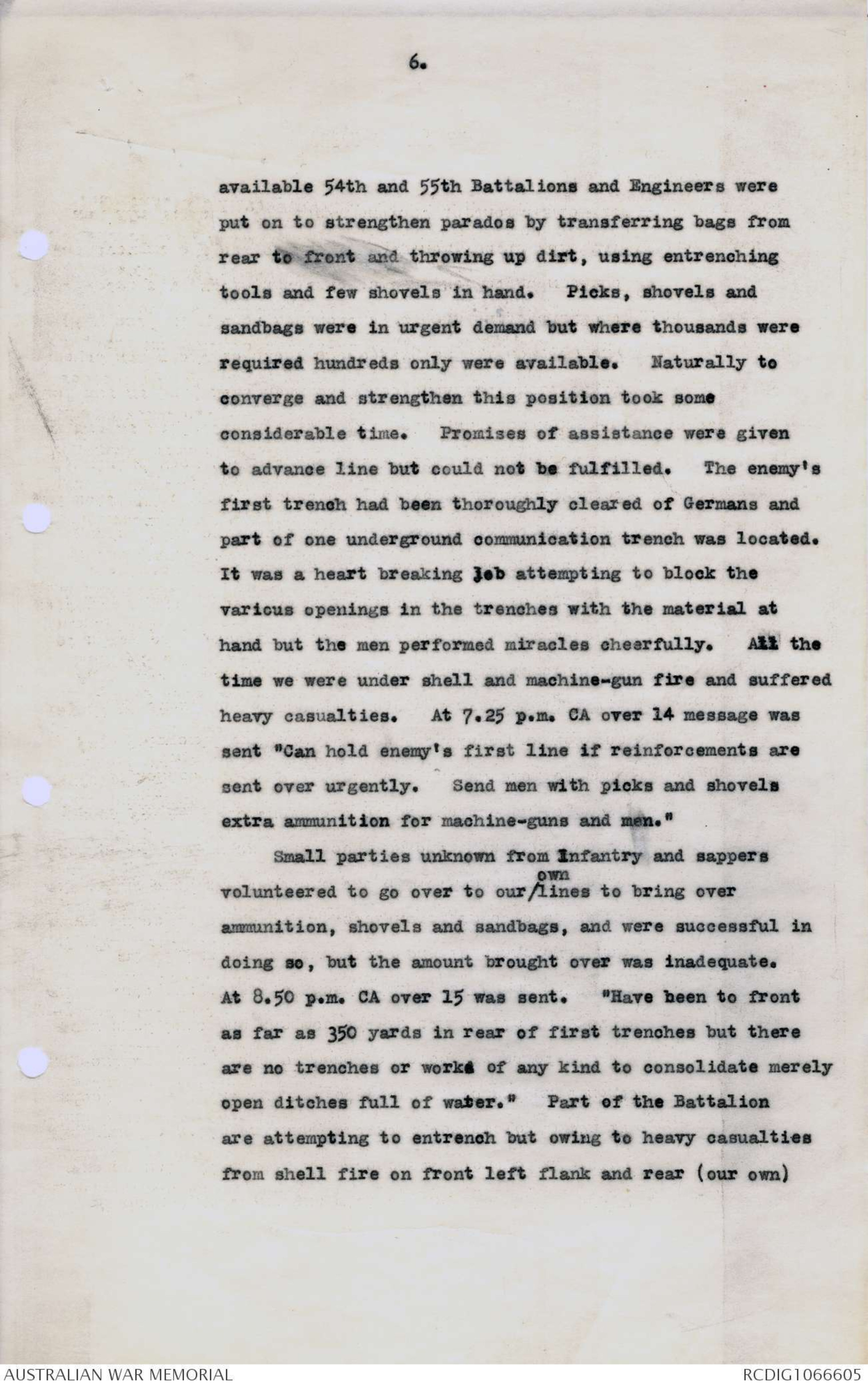
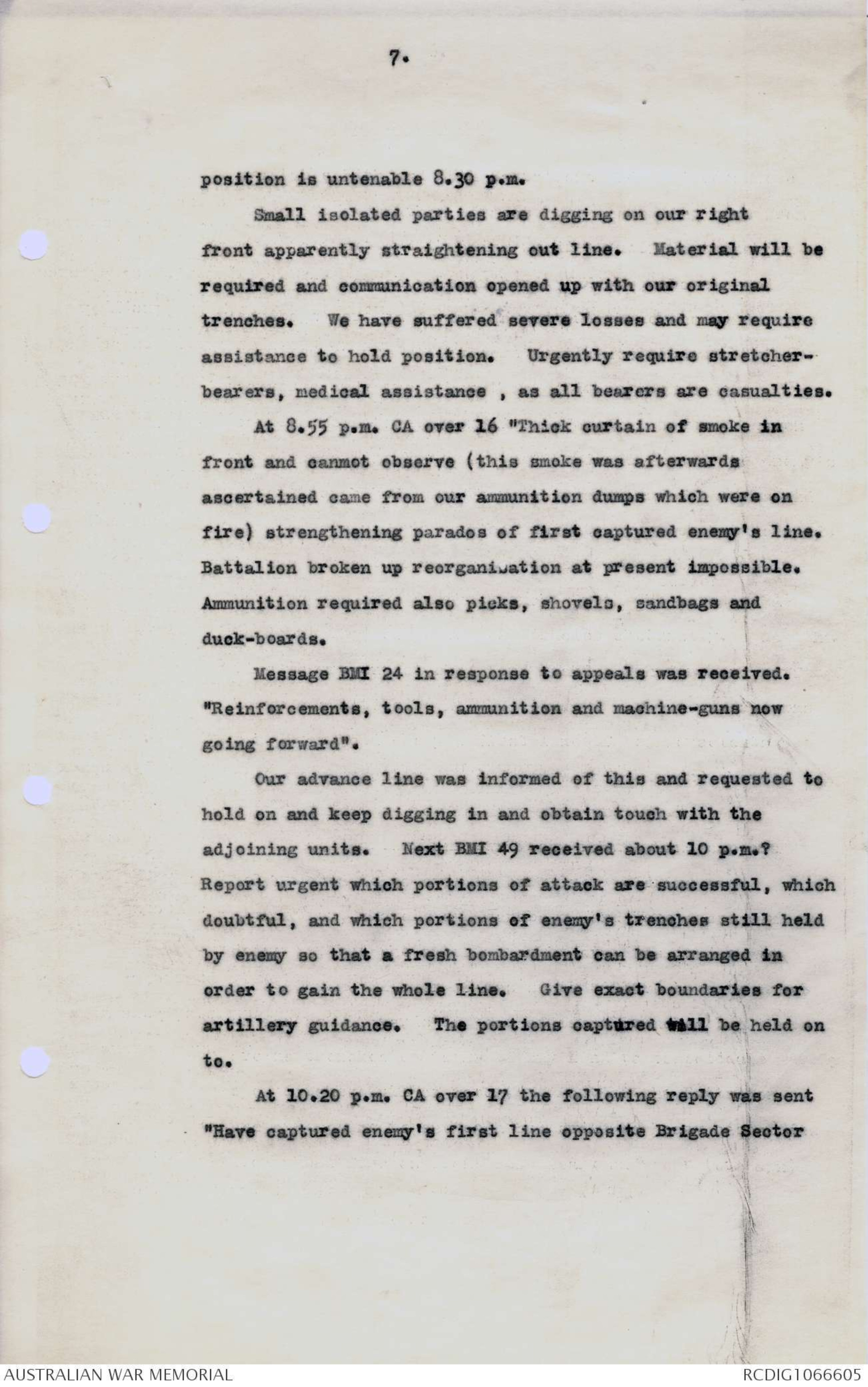
AWM38
Official History,
1914-18 War: Records of C E W Bean,
Official Historian.
Diaries and Notebooks
Item number: 3DRL606/243B/1
Title: Folder, 1916 - 1926
Duplicates some information in item 3DRL
606/243A/1; correspondents include Maj A W
Murdoch, Col F W Toll and other participants in
the Fromelles attack.
AWM38-3DRL606/243B/1
No 1 set
No 2 Copy
Battle of Fromelles
No 1 set
No. 2 COPY of DIARY No. 243 B
AWM38
3DRL 6060 ITEM 243B [1]
DIARIES AND NOTES OF C. E. W. BEAN
CONCERNING THE WAR OF 1914-1918
THE use of these diaries and notes is subject to conditions laid down in the terms
of gift to the Australian War Memorial. But, apart from those terms, I wish the
following circumstances and considerations to be brought to the notice of every
reader and writer who may ese them.
These writings represent only what at the moment of making them I believed to be
true. The diaries were jotted down almost daily with the object of recording what
was then in the writer's mind. Often he wrote them when very tired and half asleep;
also, not infrequently, what he believed to be true was not so--but it does not
follow that he always discovered this, or remembered to correct the mistakes when
discovered. Indeed, he could not always remember that he had written them.
These records should, therefore, be used with great caution, as relating only what
their author, at the time of writing, believed. Further, he cannot of course, vouch
for the accuracy of statements made to him by others and here recorded. But he
did try to ensure such accuracy by consulting, as far as possible, those who had
seen or otherwise taken part in the events. The constant falsity of second-hand
evidence (on which a large proportion of war stores are founded) was impressed
upon him by the second or third day of the Gallipoli campaign, notwithstanding that
those who passed on such stores usually themselves believed them to be true. All
second- hand evidence herein should be read with this in mind.
16 Sept., 1946. C. E. W. BEAN.
AUSTRALIAN WAR MEMORIAL
ACCESS STATUS
OPEN
HISTORICAL NOTES
On May 9th 1915 there was some sort of action near Fromelles in
which the 1st Royal Irish Rifles took part.
See Lytton's Book for
p.40 Attack on Boar's Head Salient about July 1, 1916.
also attack of September 3, near Thiepval.
Historical Notes.
"Fleurbaix",
21/7/16.
Report on Operation "Assault on and attempt to
Consolidate Enemy's Trenches N10 c 13 to N10 c 14
on the 19th & 20th July 1916".
Observation and artillery fire will be found in summary of
Intelligence attached herewith. Commencing at 2.45 p.m.
first message was sent to Brigade Head Quarters CA 1.
"Enemy straffing from midday searching for batteries. Enemy
trench mortars on front line from N10 c 06 to N10 c 56 some
falling on parapet and majority on 75 yards line. From 2 p.m.
enemy heavy straffed support and communication trenches
behind sector referred to above. Many casualties. Our trench
mortars not yet firing. Many of our shells falling short.
Our heavy artillery has apparently destroyed some of the enemy
trench mortars. Enemy's parapet and wire between N 10 c 33
and N 10 c 64 being destroyed in many places.
At 3.15 p.m. CA 2 Very heavy straffing on both front
and support trenches N 10 c 06 to N 10 c 67. Flares and
ammunition blown up in front dump. Telephone station carried
away by shell. Four signallers and two runners injured.
Colonel Toll received several pellets in face and legs but not
out of action. Observers report heavy damage to wire and
parapets by our shells. No-Man's Land also being cut up.
Heavy bombardment now continuous on both sides. Enemy firing
rifle grenades in section between "mine" and "cellar" farm"
avenues, coming enfilade from left flank.
2.
At 3.59 p.m. message received BMI 1. "Report when
in position" to which at 4.01 p.m. the reply was given
CA 4 Four waves now in position 4 p.m.
At 4.10 p.m. CA over 5. Our artillery no effect
on sector N 10 c 03 to N 10 c 33. Our shells landing in
rear of enemy's parapets. A further progress report at
4.50 p.m. CA over 6. At 4.30 p.m. our shells still falling
in rear of enemy's parapets between N 10 c 03 and N 10 c 33.
Their wires still intact in this sector. At 4.38 wire in
sector N 10 c 43 to N 10 c 75 badly damaged, also parapets.
Enemy shelling lightly on front line but very heavy on
support trenches.
Reports were then received that our shells were dropping
on our own parapets causing casualties and at 4.56 p.m. the
request was made for our artillery to lift Section "A".
This was not carried out by artillery but became worse,
shells falling behind the whole frontage held by us, very
heavy casualties eventuating and at 5.10 p.m. a very urgent
wire was sent CA over 7 "Please ask Artillery A5A to lift
another 100 yards on sectors "A" 'B" & "C". Shells falling
behind our parapet 5 p.m. The situation was not improved
and at 5.19 p.m. CA over 8 was sent "Our artillery dropping
shells behind Sectors "A" 'B" & "C'. _ 4.50 to 5.15 p.m.
Artillery asked to LIFT over those sections. Enemy wire
N 10 c 03 to N 10 c 33 not much damaged. On left N 10 c 33
to N 10 c 64½ wire and parapets badly damaged very little
enemy fire on front trenches practically all on supports
between "Mine" and "Cellar farm" avenues, and NORTH of same
searching for batteries. Casualties occurring through our
3.
own shrapnel. At 5.45 p.m. CA over 10. 'Being severely
enfiladed from left flank. Enemy wire still intact in
Sector N 10 c 03 to N 10 c 33 but parapet damaged. Most
of our shells land 20 to 30 yards in rear of their parapet.
They are now shelling our front line with scattered
casualties. It will be seen that our casualties during
the afternoon prior to attack were heavy and unfortunately
very many must be accounted to our own artillery dropping
short. Just prior to launching the attack the enemy
bombardment was hellish, and it seemed as if they knew
accurately the time set.
At 5.58 p.m. CA over 9 first and second waves across
parapet and deployed in No-Man's Land, ready to launch
attack. C.O. leaving with 4th wave.
In face of the terrific shell fire now on the
Battalion bravely led by its officers sprung over the
parapets and charged across No-Man's Land. Unfortunately
many officers were struck down in this early stage together
with senior N.C.O's, and in many instances were without
leaders. Our wire had been well cut and there was no
difficulty in getting through. No-Man's Land was fairly
easy to cross although badly cut up by large craters and
ditches full of water etc. The enemy's wire entanglements
were found to be badly broken. No-Man's Land was swept
mostly by enemy machine-gun fire. The enemy's first line
was won and thoroughly cleared, many Germans were killed
and prisoners taken. The dugouts were thoroughly searched
by bombs. A temporary search was made for the communication
trenches but could not be found except in one instance.
4.
Only sufficient men were left behind to assist the Lewis
machine-gunners in establishing posts. The remainder
swept on with the intention of capturing the second and
third trenches in the first line system, but we went on
and on but no trace could be found of same. It now
appeared evident that the information supplied as to enemy
defences and aerial photographs were incorrect and
misleading. The ground was flat covered with fairly long
grass, the trenches shown on aerial map photos were nothing
but ditches full of water along which were straight lines
of trees. We pushed on expecting to eventually reach the
enemy's works. At 6.30 p.m. a wire CA over 12 was sent
by pigeon "Four waves well over 200 yards beyond enemy's
parapets no enemy works found yet so am digging in." The
men were rallied and opened out and instructed to dig in
about 250 yards from enemy's front line. The C.O. and
Staff went on through our own box barrage and investigated
some 350 to 400 yards about N 10 A 78 and found immediately
in front about 150 yards N 10 A 75 to N 10 A 9½4 what
appeared to be a strong and important enemy position. It
was protected in front by high heavy barbed wire
entanglements some five feet high and would have been
a difficult position to storm and was intact from our own
gun fire. All this time our men were feeling the effect
of the enemy's enfilade artillery and machine-gun fire, the
latter coming from concealed positions in farms,
Delangre, and from houses in "Les Clochers" village. Also
from our own artillery as it was impossible to post them
as to our positions. The men were reorganised and
5.
disposed as well as possible and an attempt made to
co-ordinate their trenches with 54th Battalion on our
right. No contact with the 32nd Battalion on our left
then being made. We had to use our entrenching tools
to dig temporary cover exposed to shell and machine-gun
fire from all points of the compass and sand bags were
very few in number, with which to build parapets. The
men were cheerful and worked willingly and it is
impossible to differentiate. There was a woeful scarcity
of officers and N.C.O's but the best was done under the
circumstances. The advance line was under the command
of Major Eckersley and in the event of them not being
able to hold during the night the C.O. decided to strengthen
as much as possible the enemy's first line with what
material was available and made his Headquarters there.
Communication being kept up with advance party. At
7.14 p.m. CA 13 was sent also by pigeon. No works to
hold so fell back to enemy first line. Send ammunition
across urgently. Machine-guns and crews required.
Am strengthening parados. Will require entrenching
tools, picks and shovels, sandbags. Many casualties but
cannot estimate until first count after reorganising."
Contact was made with the 54th Battalion on our
right flank but none could be made with 32nd on our left,
who apparently had pushed the whole of their men beyond
the first line and had entrenched nearly in line with
our own battalion, but contact was afterwards established.
Very few of our men were available for the improvement
of defencement of the enemy's first line and all men
6.
available 54th and 55th Battalions and Engineers were
put on to strengthen parados by transferring bags from
rear to front and throwing up dirt, using entrenching
tools and few shovels in hand. Picks, shovels and
sandbags were in urgent demand but where thousands were
required hundreds only were available. Naturally to
converge and strengthen this position took some
considerable time. Promises of assistance were given
to advance line but could not be fulfilled. The enemy's
first trench had been thoroughly cleared of Germans and
part of one underground communication trench was located.
It was a heart breaking job attempting to block the
various openings in the trenches with the material at
hand but the men performed miracles cheerfully. All the
time we were under shell and machine-gun fire and suffered
heavy casualties. At 7.25 p.m. CA over 14 message was
sent "Can hold enemy's first line if reinforcements are
sent over urgently. Send men with picks and shovels
extra ammunition for machine-guns and men."
Small parties unknown from Infantry and sappers
volunteered to go over to our/own lines to bring over
ammunition, shovels and sandbags, and were successful in
doing so, but the amount brought over was inadequate.
At 8.50 p.m. CA over 15 was sent. "Have been to front
as far as 350 yards in rear of first trenches but there
are no trenches or works of any kind to consolidate merely
open ditches full of water." Part of the Battalion
are attempting to entrench but owing to heavy casualties
from shell fire on front left flank and rear (our own)
7.
position is untenable 8.30 p.m.
Small isolated parties are digging on our right
front apparently straightening out line. Material will be
required and communication opened up with our original
trenches. We have suffered severe losses and may require
assistance to hold position. Urgently require stretcher-
bearers, medical assistance, as all bearers are casualties.
At 8.55 p.m. CA over 16 "Thick curtain of smoke in
front and canmot observe (this smoke was afterwards
ascertained came from our ammunition dumps which were on
fire) strengthening parados of first captured enemy's line.
Battalion broken up reorganisation at present impossible.
Ammunition required also picks, shovels, sandbags and
duck-boards.
Message BMI 24 in response to appeals was received.
"Reinforcements, tools, ammunition and machine-guns now
going forward".
Our advance line was informed of this and requested to
hold on and keep digging in and obtain touch with the
adjoining units. Next BMI 49 received about 10 p.m.?
Report urgent which portions of attack are successful, which
doubtful, and which portions of enemy's trenches still held
by enemy so that a fresh bombardment can be arranged in
order to gain the whole line. Give exact boundaries for
artillery guidance. The portions captured will be held on
to.
At 10.20 p.m. CA over 17 the following reply was sent
"Have captured enemy's first line opposite Brigade Sector
 Deb Parkinson
Deb ParkinsonThis transcription item is now locked to you for editing. To release the lock either Save your changes or Cancel.
This lock will be automatically released after 60 minutes of inactivity.